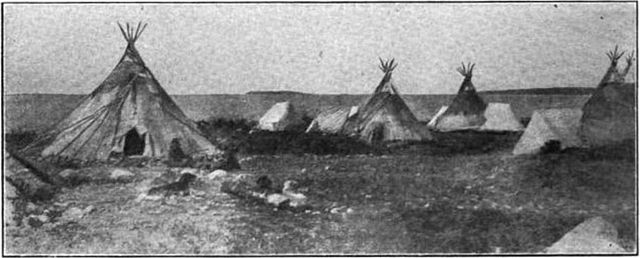Indigenous peoples of the Subarctic
Indigenous peoples of the Subarctic are the aboriginal peoples who live in the Subarctic regions of the Americas, Asia and Europe, located south of the true Arctic at about 50°N to 70°N latitude. This region includes the interior of Alaska, the Western Subarctic or western Canadian Shield and Mackenzie River drainage area, the Eastern Subarctic or Eastern Canadian Shield, and most of Fennoscandia, Northwestern Russia and Siberia. Peoples of subarctic Siberia and Greenland are included in the subarctic; however, Greenlandic Inuit are usually classified as Indigenous peoples of the Arctic.
Tłı̨chǫ camp on the shore of Slave Lake at Fort Resolution, Northwest Territory, 1907
The subarctic zone is a region in the Northern Hemisphere immediately south of the true Arctic, north of humid continental regions and covering much of Alaska, Canada, Iceland, the north of Fennoscandia, Northwestern Russia, Siberia, and the Cairngorms. Generally, subarctic regions fall between 50°N and 70°N latitude, depending on local climates. Precipitation is usually low, and vegetation is characteristic of the taiga.
Subarctic vegetation in Canada (Larix laricina)
In Fennoscandia and northwestern Russia, oceanic influences soften winter temperatures; the lack of permafrost allow agriculture and infrastructure. Lenvik, Norway, at 69°N.
Images taken near Unalakleet show very few trees, reflecting the subarctic and polar boundaries.




